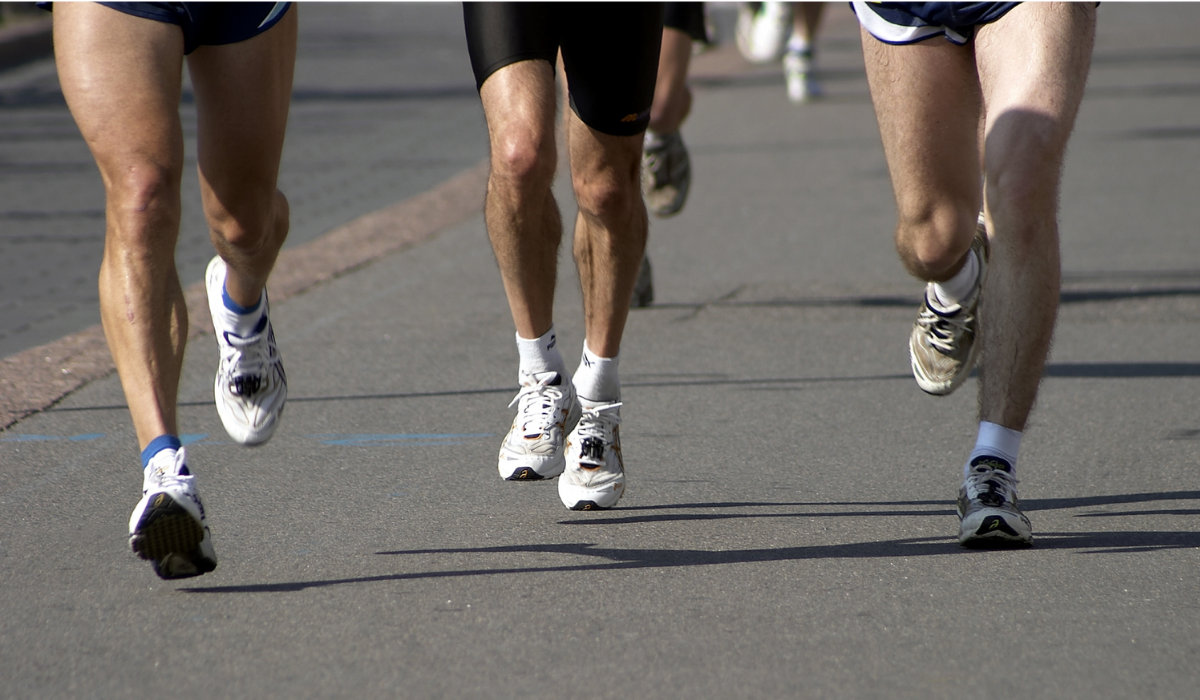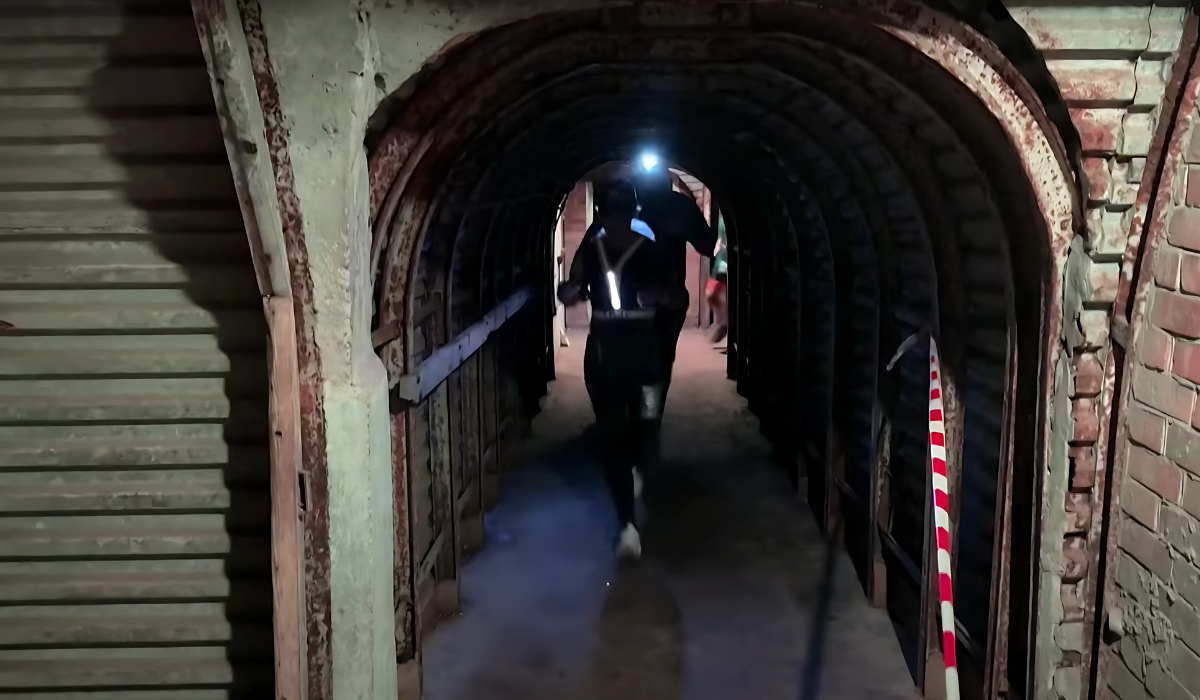Perfecting Your Marathon Pace: Essential Tips for Dublin Runners

September 22, 2024

Perfecting Your Marathon Pace: Essential Tips for Dublin Runners
“It’s not a sprint, it’s a marathon. So stop running like you’re being chased by a rabid dog.”
Alright, the Dublin marathon is just five weeks away. You’ve got the long runs under your belt, you’re foam rolling like it’s an Olympic sport, and you’ve even begrudgingly added a bit of strength training to your life. Check you! But now, as race day edges ever closer, it’s time to tackle the big question: how fast should you run this marathon?
Before you say, “As fast as possible, obviously,” let me stop you right there. This is a marathon, not a pub quiz speed round. The trick to a successful marathon isn’t just running, it’s running smart. I know that sounds like so cliché but it so important. And that means figuring out your ideal race pace.
If you start too fast, you’ll hit the dreaded “wall” so hard you’ll think you’ll like a bricklayer during the Celtic tiger years. Start too slow, and you’ll spend the rest of the race trying to make up for lost time (and sanity). So let’s find that Goldilocks pace, just right.
How to Calculate a Realistic Race Pace Based on Your Training: The Maths No One Told You About
First things first, your perfect race pace isn’t some fantasy number you’ve dreamt up because you watched Chariots of Fire one too many times, or because Johnny down the in pub reckons you could do it "easy" after a plate of chips and a pint. No, my friend, it’s based on something even more reliable than Johnny’s advice: your training.
By now, you should have clocked enough long runs (if not, I’m sorry, you’re already committed). These runs are where the magic happens, or more accurately, where you get to experience every possible level of regret. But they also hold the golden key to figuring out your race pace – assuming you weren't distracted wondering whether you turned off the immersion. So, grab your Garmin, your Strava, or whatever digital torment you've been using, and review those steady long runs where you weren’t legging it home because of an unplanned ‘pit stop.’
Now, what’s your average pace over those long runs? Go ahead, check – don’t worry, we’ll wait. That pace is your starting point. Think of it as your training wheels. And before you get any wild ideas, no, this isn’t the pace you’ll run on race day. Unless your goal is to spend the final 10k crying and asking strangers if they’ve seen your legs.
Here’s where the maths kicks in – don’t panic, we’ll keep it simple. You can actually run your marathon pace around 1 to 2 minutes per mile faster than your long-run pace (that’s 40-70 seconds per kilometre for those who prefer to measure in units that sound far more reasonable). This is because on race day, you'll be boosted by adrenaline, the energy of the crowd, and the terrifying sight of a banana dressed as a charity runner gaining on you.
Now, why this difference in pace, you ask? Well, when you’re training, you're building endurance, conditioning your body to endure the full-length suffering of a marathon. But come race day, that adrenaline will have you thinking you're Mo Farah for the first 15 minutes. Just don't get too carried away, or you’ll end up like the person who thinks they’re at the finish line, only to realise they’ve just passed the "halfway" sign.
In summary: your race pace isn't a number you pull out of thin air like a magician who’s forgotten his card trick. It’s grounded in what you've already achieved, minus the “just-get-through-it” pace you’ve been practising. Come race day, though, you can shave off a bit of time. Just don’t shave off too much or you’ll be begging for a piggyback by mile 20.
And remember, no matter what Johnny says, it’s never too late to turn off that immersion.
The Importance of Negative Splits
Now, let’s talk strategy. And no, I don’t mean how to have a sneaky pint of Guinness at mile 20 (though, we can address that later). We’re talking about negative splits: the art of running the second half of the marathon faster than the first.
Yes, you read that right. You’re supposed to speed up as the race progresses, not blow all your energy in the first few miles like an overeager puppy let off the leash for the first time. Negative splits are the key to marathon success, so they say. Start cautiously, and while others crumble like biscuits, you’ll breeze past, smugly convinced you’ve cracked the marathon code.
To run a negative split in the Dublin Marathon, for instance, you’ll need discipline. Let’s say you’re aiming to finish in under four hours. The average pace should be around 9:09 per mile, but the trick is to start slightly slower, around 9:16 to 9:20 minutes per mile. As you go along, and as your competitors begin questioning their life choices at mile 18, you’ll be in prime position to gradually pick up the pace for the second half, aiming for around 8:58 to 9:02 per mile. While this sounds simple enough on paper, by the time you hit the last six miles, when your legs are screaming for mercy, you’ll realise this strategy requires a particular blend of patience and self-control.
The trick is patience. Resist the urge to go all out in the first half, no matter how much your legs are telling you they’ve got this. Stick to the plan and save the heroics for mile 20, when it actually matters.
Pacing During the First Half of the Marathon
So, how do you survive the first half of the marathon without feeling like you’re holding back your inner Usain Bolt? Three simple words: control, control, control. Think of yourself like a sensible adult at a party with free drinks but knowing full well they’ve got work in the morning.
It’s tempting to get caught up in the excitement at the start line—fresh legs, adrenaline pumping, and the whole of Dublin cheering you on. But remember, what feels “comfortable” in the first few miles will likely feel like a death march by mile 22 if you don’t pace yourself wisely.
Here are some tips to keep yourself in check:
- Start Slow: If you think you’re going slow at the start, go even slower. For the first few miles, aim to run 10-20 seconds slower than your goal pace. It should feel almost offensively easy, like leaving food on your plate at Christmas—wrong at first, but you’ll thank yourself later.
- Use Your Watch (But Don’t Obsess): Set your watch to alert you if you’re running faster than your target pace. Having that gentle reminder will keep you in line. But don’t spend the entire race staring at your wrist—you’ll miss out on the sights and the top-tier people-watching that comes with any marathon.
- Find Your Rhythm: By mile 3 or 4, you should be settling into a comfortable rhythm. This is your pace for the bulk of the race, so it should feel like you’re cruising. If you’re already questioning your life decisions at this point, you’ve probably gone out too fast.
- Don’t Get Sucked into Other People’s Pace: You’ll see some runners zoom past you early on, looking like they’re late for last orders. It’s easy to think, “Maybe I should be going that fast too?” Resist! Stick to your plan, not theirs. Trust me, you’ll catch them later when they’re trudging through the last few miles like they’re knee-deep in wet cement.
By holding back in the first half, you’re setting yourself up to make the most of the race’s final, decisive stretch. This is where the strategy comes into play, and if you’ve paced yourself properly, you’ll be gliding past those who didn’t with a sense of superiority that says you’ve mastered the marathon game.
The Mental Side of Pacing
Let’s be real: marathon pacing isn’t just a physical challenge—it’s mental too. Your mind will play tricks on you, convincing you at mile 5 that you’re a superhero, and then at mile 18 that you’ve somehow been running for three consecutive lifetimes.
The key is to stay focused and avoid letting your mind—or the buzzing crowd—push you to speeds you’ll regret. Break the race down into chunks: run the first 10 miles with your head, the next 10 with your legs, and the final 6.2 with whatever shreds of dignity you’ve got left.
And if your mind starts wandering to dark places? Remember this: there’s a pint of Guinness at the finish line. Keep moving, and you’ll get there.
Conclusion
So, there you have it: your guide to marathon pacing, the Goldilocks way. Not too fast, not too slow—just right. By calculating your realistic race pace, embracing negative splits, and staying controlled in the first half of the race, you’ll set yourself up for a strong finish. And trust me, there’s no better feeling than crossing that finish line with your legs still working, passing people who’ve misjudged their pace along the way.
It’s all about playing the long game. Because remember, you’re not just running a marathon, you’re running the Dublin Marathon five weeks from today. And as we all know, in Dublin, pacing yourself correctly means you can finish strong, celebrate with style, and maybe even claim that all-important post-race pint of Guinness without needing an ambulance.
Sláinte, and happy pacing!




